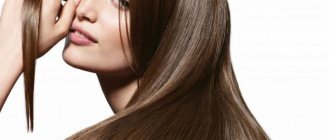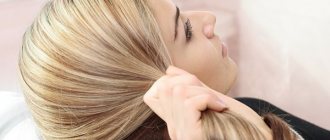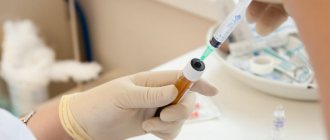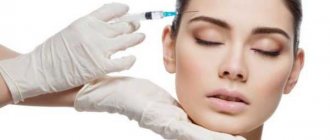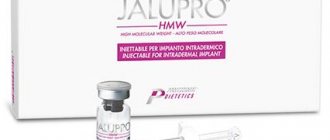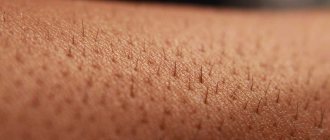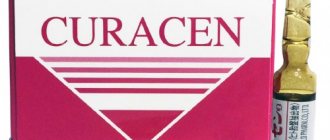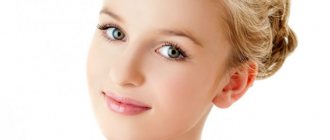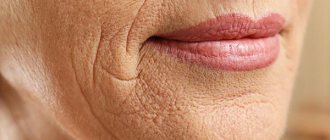The healing effects of cold on the human body were noted by our ancestors. To strengthen the body, they hardened themselves in all available ways - swimming in an ice hole, wiping with snow, washing with ice water. Later, the effectiveness of the method received scientific justification - short-term exposure to cold stimulates protection and recovery mechanisms. As a result, the immune system is strengthened, and all organs and systems begin active regeneration.
In modern medicine and cosmetology, a procedure such as cryotherapy is in demand. Its main goal is to preserve youth and improve health.
Types of cryotherapy
There are several types of cryotherapy - local, private, general or cryomassage. Each type has its own indications, features and advantages. The unifying characteristic is the healing effect of cold on the body. Regularity is required to achieve the desired effect.
Content:
- Types of cryotherapy
- Benefits of cryotherapy
- Indications for cryotherapy
- Contraindications and restrictions
- Preparation for the procedure
- Possible side effects
General cryotherapy is a procedure during which a person is placed in a special chamber where liquid nitrogen is sprayed at a temperature of about -150 C. Due to the short duration, not the entire body is cooled, but only the upper layers of the epidermis. To increase the effectiveness of therapy, contrast is used - first the skin is warmed up and then sharply cooled.
Local cryotherapy is the effect of negative temperatures on problem areas of the skin. In this way, you can get rid of small skin growths and tumors, suppress inflammatory processes or speed up the process of restoration of epidermal cells.
Private cryotherapy is a treatment procedure that can be performed at home without the supervision of a specialist. Simply put, these are baths and ice packs that relieve pain, swelling, and fatigue. It is important to know that simply rubbing the skin with an ice cube prevents early aging and protects against the appearance of deep wrinkles.
Cryomassage is the effect of cold on the facial skin. Most often, this is necessary to relieve irritation after cosmetic procedures such as peeling or plastic surgery. The essence of the method is that a specialist cools a special wooden spatula with a cotton tip in liquid nitrogen (temperature - minus 190 C), with which he massages the skin of the face and neck with special movements. Before your first cryotherapy session, you must visit your doctor and make sure there are no contraindications.
Types of cryotherapy
There are several types of cryotherapy:
- Local;
- General;
- Private;
- And also cryomassages.
Let's take a closer look at the cases in which one or another type of cryotherapy is used.
Local
In this case, liquid nitrogen is used to achieve the lowest possible temperature on a specific area of the skin or body.
It should be noted that this procedure has two types of effects on the body:
- Activation of tissue death (in the case of removal of moles, tumors, warts, etc.);
- Stimulation of a sharp constriction of blood vessels, which in turn increases blood flow to a specific area. This effect significantly increases the rate of cell regeneration, which accelerates the healing of inflammation and wounds.
General
The most popular type of procedure, which involves placement in a special cryocapsule, and the temperature inside this chamber reaches -150 degrees. But don’t worry, being in such a chamber will not harm you in any way, since it is designed in such a way as to cool only the superficial layers of your skin.
One session of general cryotherapy lasts no more than 2-3 minutes, while you are under the careful supervision of a specialist, it is recommended to use cotton underwear in order to maintain hygiene rules, also take woolen socks and mittens with you, because the limbs cool faster, which can cause until frostbite.
To conduct a full course of general cryotherapy, you need to visit the above-mentioned capsule 10-15 times, but if we are talking about fighting diseases, then the number of visits can increase significantly.
Private
The only option in which you can do everything yourself, while at home. Private cryotherapy includes: cold bath, cold (or contrast) shower, ice compresses, etc. Despite the fact that in this case the supervision of a specialist is not necessary, it is still not recommended to ignore the requirements and instructions of the doctor, because otherwise you will harm yourself.
As for the usefulness of such procedures, it is with their help that you can increase skin tone, relieve muscle fatigue after work or training, and also reduce swelling.
Cryomassages
This method of exposure to liquid nitrogen is mainly used for cosmetic purposes, since the cold allows you to rejuvenate the skin and improve its condition.
The procedure itself is performed using a cotton swab, which is soaked in the above-mentioned liquid, while the massage therapist moves this device near the areas of the skin that need correction, but does not touch them.
Benefits of cryotherapy
Cryotherapy has a pronounced tonic, rejuvenating and restorative effect. The procedure itself is absolutely painless and does not bring discomfort to the person. Due to the impact of negative procedures, the active production of the pleasure hormone begins - as a result, after the session, not only good health, but also an excellent mood.
In modern cosmetology, cryotherapy is one of the fastest-acting ways to combat many skin problems - premature aging, dullness, dehydration, sagging, dermatological diseases. The main condition for the effectiveness of cold therapy is the selection of the correct treatment method and the use of specialized equipment.
Indications for cryotherapy
The list of indications for the use of cryotherapy is quite extensive. It includes both dermatological and medical ailments. Most often, cryotherapy is indicated for:
- chronic skin diseases, including psoriasis and dermatitis of various etiologies;
- excess body weight, pronounced cellulite;
- neoplasms on the skin;
- dehydration of the epidermis, premature aging;
- chronic stress;
- diseases of the respiratory system;
- some diseases of the female reproductive system, including infertility.
This is not a complete list of reasons to resort to cold treatment. Some people visit the cryochamber solely to maintain their tone and boost their energy levels.
Contraindications and restrictions
Cold can have not only a positive effect on the body, but also a detrimental one. Therefore, it is important to undergo a medical examination and consult with a qualified specialist before starting therapy. Cryotherapy is not recommended for people who have increased skin sensitivity to low temperatures.
Cold dermatitis is one of the direct contraindications. You should not go for the procedure if you have an elevated body temperature or an exacerbation of chronic ailments - this may cause the disease to worsen.
Another contraindication is systemic blood diseases and mental disorders.
General cryotherapy involves placing the patient in a special capsule. It is better for people suffering from claustrophobia to refrain from such activities in order to prevent the development of a panic attack. In case of instability of the psycho-emotional state during the treatment period, it is recommended to take sedative medications.
Preparation for the procedure
Preparation for cryotherapy begins with a visit to a therapist, who will issue a referral for an ECG. Additionally, you need to take a blood and urine test. If, based on the results of the examination, the doctor allows cold treatment, you can safely sign up for the procedure.
Despite the painlessness and absence of discomfort directly during exposure to low temperatures, it is not superfluous to pre-harden the body. For example, a week before the start of therapy, you can take a contrast shower - thanks to this, restorative and protective processes will already be launched in the skin, and the complex will be more effective.
Best materials of the month
- Why you can't go on a diet on your own
- 21 tips on how to avoid buying stale food
- How to keep vegetables and fruits fresh: simple tricks
- How to curb your sweet cravings: 7 unexpected products
- Scientists say youth can be extended
During general cryotherapy, the patient is placed in a special chamber, so the most sensitive areas of the body - the head, hands and feet - need to be protected from low temperatures. Experts recommend taking a warm hat, mittens and shoes with you to the procedure.
The duration of the procedure is about 5 minutes. To achieve the desired effect, it is recommended to undergo a set of procedures - from 5 to 15 times. The break between sessions is determined by a specialist based on individual indicators. After the procedure itself, the skin does not require special care. There are also no restrictions regarding exposure to ultraviolet radiation or the use of decorative cosmetics.
Therapeutic effect of cryotherapy
The wonderful effects of cold on the body have been known for a long time. For many centuries, healers of different nations have used the healing properties of cold for hardening, treating various ailments, and restoring good spirits.
The study of the healing properties of cold formed the basis of a new direction - cryotherapy, based on the use of the effect of ultra-low temperatures on the human thermoregulation system. Simply put, cryotherapy is cold treatment. Cryotherapy, aimed at mobilizing the internal forces of the body, was highly appreciated both by doctors of various specialties and by cosmetologists. The temperature during cryotherapy is selected so that only the surface layer of the skin has time to cool, without causing general hypothermia of the body. The therapeutic effect of cryotherapy is based on the fact that cold first causes a sharp constriction of blood vessels, and then their dilation. Due to this, the blood supply system receives a powerful impulse and metabolic processes are catalyzed. However, the main effect of cold exposure, which doctors and cosmetologists count on, is not so much the removal of pathologically altered tissue, but rather the beneficial effect of cold on healthy tissue and maximum restoration of organ function. How is the cryotherapy procedure performed? The procedures are carried out: men in swimming trunks, women in a bathing suit, patients wear socks and sports, closed shoes. For a short time (2-3 minutes) you are immersed in a chamber cooled to a temperature of -85 oC. The cryochamber has a glass door and you are in constant visual contact with the nurse who is monitoring your condition for your safety and comfort. During the procedure, natural stimulation of the immune system occurs, aimed at revising all organs, stabilizing hormonal levels, metabolism, and obtaining stable vitality due to the additional release of endorphins (hormones of happiness). Cryotherapy is an original and reliable way to get a boost of energy and strengthen your immune system. Moreover, thanks to its special properties, the feeling of cold is unexpectedly pleasant, especially in the summer. For preventive and general health purposes, 10–25 procedures of general cryotherapy are prescribed. The treatment course (for various diseases) is 20 - 30 procedures depending on the pathology, stage of the disease, and concomitant therapy. The effect of cryotherapy As doctors note, the recently increased popularity of cryotherapy (cold treatment) is a response to stress, fatigue and environmental pollution characteristic of city life. The unique technique of cryotherapy allows us to recommend it as a health-improving, therapeutic and cosmetological procedure for achieving harmony of soul and body. The main effect of cryotherapy is that the entire body is renewed after exposure to cold. Immunity increases sharply, all types of pain recede, metabolism in the skin is activated. In terms of effectiveness, one course of cryotherapy (20-30 procedures) is not inferior to such serious therapeutic measures as:
- Taking immunostimulating drugs - patients who underwent a course of general cryotherapy showed a powerful recovery effect over 1.5 - 2 years, manifested by a significant decrease in the frequency and severity of colds, acute respiratory viral infections, and influenza.
- The use of pain medications is significantly reduced or completely stopped.
- In a weight loss program, due to significant energy costs, general cryotherapy can be compared in effectiveness with exhausting physical activity.
- In terms of its effectiveness, general cryotherapy is one of the highest priorities in antiaging medicine.
Therapeutic effects of general cryotherapy:
- Anti-pain
- Anti-inflammatory (one course of cryotherapy is equal to 3-4 years of intensive hardening)
- Immunostimulating and immunomodulating (strengthening and restoring the immune system)
- Decongestant
- Relaxing (an effective way to relieve stress)
- Reparative (healing)
A cosmetology program based on cryotherapy is not just a relaxing procedure; it can also be used to solve aesthetic problems such as cellulite, acne, excess weight, swelling, and many others. etc. Cryotherapy has shown good results in the treatment and strengthening of hair, improvement of skin turgor and rejuvenation. A delightful session of vivacity, good mood and at the same time therapeutic and cosmetological care - this is all the effect of cryotherapy! According to cosmetologists, it is especially effective to combine sessions in a cryosauna with other physiotherapeutic procedures, massage, sports activities in fitness, as part of weight loss, anti-cellulite and other cosmetology services in salons. This allows you to enhance the effect of rejuvenation of the body, increase its performance, overcome depression and the effects of stress. Indications for general cryotherapy: Cosmetology
- General cryotherapy significantly rejuvenates the external aesthetic state of the skin, bringing it to the figurative expression: “Blood with milk.” The number of procedures is 10 - 20, 1 time per day or every other day.
- Treatment of cellulite and excess weight. Depending on body weight and temperature inside the chamber, the patient loses from 1000 to 3000 kcal during the procedure. In some cases, patients lose weight by 7 - 10 kg per course of 20 - 30 procedures. The number of courses is determined by the attending physician.
Dermatology
- Psoriasis. 3 courses are prescribed, 25 - 20 - 15 procedures over a period of 6 - 8 months. However, even 1 course of general cryotherapy out of 25 procedures significantly improves the prognosis of achieving remission in psoriasis.
- Atopic dermatitis (diffuse neurodermatitis) Course - 30 procedures. The regimen of procedures is determined by the doctor.
- Complex therapy of seborrhea, acne, rosacea. Course 15 - 20 procedures.
Neuropathology, vertebrology:
- Migraine
- Tension headache
- Pain syndromes (muscle, joint, after injury, etc.)
- Osteochondrosis
- Herniated discs
- Discogenic radiculopathies
- Recovery after illnesses of the nervous system
The doctor determines the number of procedures and courses according to indications. Gynecology: in the treatment of infertility, miscarriages, menopause, endometriosis, when planning pregnancy (for the prevention of toxicosis). Course - 25 procedures, number 3 - 5 with a break of 2 - 3 months. Respiratory diseases: bronchial asthma, chronic bronchitis, chronic pneumonia. Course - 25 - 30 procedures. Number of courses - 3 - 5, interval 1 - 3 months. Rehabilitation for chronic fatigue syndrome, withdrawal states. Prevention of colds, maintaining stable homeostasis (constancy of the internal environment of the body). Recovery after severe somatic, infectious and surgical diseases. During the period of receiving general cryotherapy, sleep improves, irritability goes away, mood improves, and the craving for alcohol and sedatives and painkillers decreases. Tremors (trembling limbs) and sweating are reduced. Almost all patients note an improvement in overall well-being, increased performance and a positive effect on the sexual sphere. Course - 20 - 25 procedures. The number of courses is according to indications. Contraindications to general cryotherapy Absolute contraindications:
- Acute decompensated conditions of internal organs and systems
- Severe chronic diseases of the cardiovascular system, respiratory system, nervous system, urinary system in the acute stage
- Severe pathology of arterial vessels - vasculitis, arteritis, Raynaud's disease
- Thromboembolic pathology of the great vessels
Relative contraindications:
- Chronic, often recurrent foci of local infection (chronic tonsillitis, pharyngitis, adnexitis, endometritis, etc.). General cryotherapy can only be prescribed during combination treatment, including antibiotic therapy.
- Acute infectious diseases (ARVI, influenza, acute bronchitis, etc.).
- Acute and chronic blood diseases.
- The patient’s psycho-emotional unpreparedness and his negative attitude towards this treatment method.
- Claustrophobia (fear of enclosed spaces)
Possible side effects
If safety rules are violated or the session time is increased, dermatitis or frostbite of some areas of the skin may develop. If such reactions are detected, the patient must inform the specialist who performed the procedure about them and refuse cryotherapy until the skin is completely restored.
The body must be completely dry during the general cryotherapy procedure - moisture attracts liquid nitrogen, and its particles adhere firmly to the surface of the skin. Therefore, during the session, special attention is paid to protecting the face.
More fresh and relevant information about health on our Telegram channel. Subscribe: https://t.me/foodandhealthru
We will be grateful if you use the buttons:
The effectiveness of cryotherapy
Cryotherapy is traditionally used in courses. You can evaluate the effectiveness of the procedure not immediately, but after several sessions.
It is most effective to use procedures based on the use of liquid nitrogen. This allows you to achieve a comprehensive positive effect on facial skin:
- increasing tissue elasticity;
- elimination of age-related changes;
- improvement of complexion;
- normalization of the sebaceous glands;
- reducing the volume of fat deposits on the face;
- stimulation of the synthesis of own collagen and elastin;
- prevention of frequent exacerbations of dermatitis, psoriasis, acne;
- getting rid of moles, papillomas, warts;
- reduction of swelling and irritation;
- accelerating the process of skin restoration after traumatic cosmetic procedures, including chemical peeling and laser resurfacing.
A course of cold therapy is recommended. Regular procedures support the activity of all internal biochemical reactions, stimulate the functioning of fibroblasts, cell renewal, and maintain the density of the skin framework. You can learn more about the use of cold exposure to rejuvenate facial skin and treat certain diseases from the specialists of the Healthy Family clinic.
